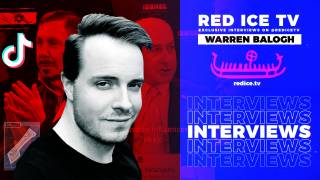Mysterious El Dorado - A Place, or a Person?
Source: bbc.co.uk
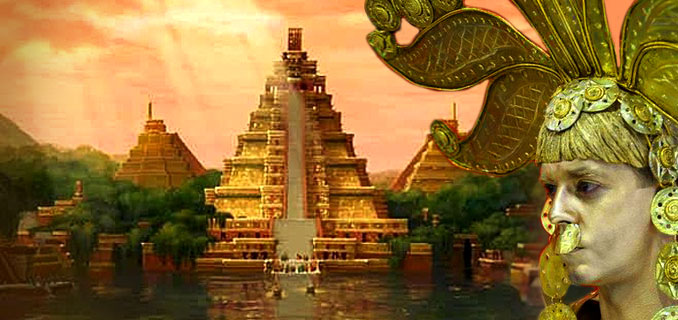
The dream of El Dorado, a lost city of gold, led many a conquistador on a fruitless trek into the rainforests and mountains of South America. But it was all wishful thinking. The "golden one" was actually not a place but a person - as recent archaeological research confirms.
Columbus’s arrival in the Americas in AD1492 was the first chapter in a world-changing clash of cultures. It was a brutal confrontation of completely opposing ways of living and systems of beliefs.
The European myth that arose of El Dorado, as a lost city of gold waiting for discovery by an adventurous conqueror, encapsulates the Europeans’ endless thirst for gold and their unerring drive to exploit these new lands for their monetary value.
The South American myth of El Dorado, on the other hand, reveals the true nature of the territory and the people who lived there. For them, El Dorado was never a place, but a ruler so rich that he allegedly covered himself in gold from head to toe each morning and washed it off in a sacred lake each evening.
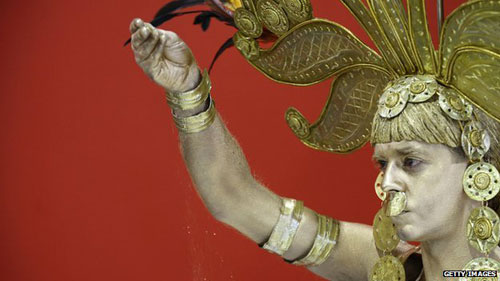
The real story behind the myth has slowly been pieced together over recent years using a combination of early historical texts and new archaeological research.
At its heart is a true story of a rite of passage ceremony carried out by the Muisca peoples who have lived in Central Colombia from AD800 to the modern day.
Different Spanish chroniclers arriving in this alien continent in the early 16th Century began to write about this ceremony of El Dorado, and one of the best accounts comes from Juan Rodriguez Freyle.
In Freyle’s book, The Conquest and Discovery of the New Kingdom of Granada, published in 1636, he tells us that when a leader died within Muisca society the process of succession for the chosen "golden one" would unfold. The selected new leader of the community, commonly the nephew of the previous chief, would go through a long initiation process culminating in the final act of paddling out on a raft onto a sacred lake, such as Lake Guatavita in Central Colombia.
Surrounded by the four highest priests adorned with feathers, gold crowns and body ornaments, the leader, naked but for a covering of gold dust, would set out to make an offering of gold objects, emeralds and other precious objects to the gods by throwing them into the lake.
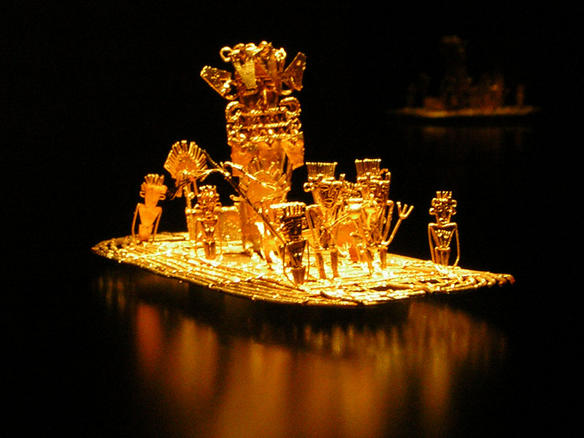
Muisca raft, representation of the initiation of the new Zipa in the lake of Guatavita, possible source of the legend of El Dorado. It was found in a cave in Pasca, Colombia in 1856, together with many other gold objects. It is 19.5 cm long, 10.1 cm wide and 10.2 cm high. Dated between 1200 and 1500 BC. It is made of an alloy of gold (80%), silver and copper, by using the lost wax method. The cacique in the center is surrounded by attendants and oarsmen. Source: Wikimedia.
The shores of the circular lake were filled with richly adorned spectators playing musical instruments and burning fires that almost blocked out the daylight from this crucible-like lake basin. The raft itself had four burning fires on it throwing up plumes of incense into the sky. When at the very centre of the lake, the priest would raise a flag to draw silence from the crowd. This moment would mark the point at which the crowds would commit allegiance to their new leader by shouting their approval from the lakeshore.
Fascinatingly, many aspects of this interpretation of events have been validated by painstaking archaeological research - research that also reveals the exceptional skill and scale of gold production in Colombia at the time of European arrival in 1537.
Within Muisca society gold, or the more specifically an alloy of gold, silver and copper called tumbaga, was highly sought after, not for its material value but for its spiritual power, its connection to the deities and its ability to bring balance and harmony within Muisca society. As Muisca descendant Enrique Gonzalez explains, gold does not symbolise prosperity to his people.
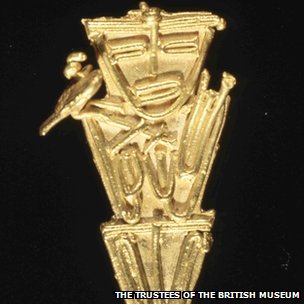
Tunjos or offerings to the gods were left in sacred places like lakes and caves
[...]
Read the full article at: bbc.co.uk
The origin of the legend of El Dorado may be located in the Muisca Confederation. The Zipa used to offer gold and other treasures to the Guatavita goddess. To do so, the Zipa covered himself with gold (el dorado means the gilded person). This tradition was well-known outside the Confederation, as far as the Caribbean Sea; the Spaniards were attracted by the stories of a "city of gold" that actually did not exist. Indigenous people sometimes got rid of the ambitious Spaniards in that way, pointing them in the direction of other peoples. The Guatavita lagoon was widely explored by the Conquerors, looking for gold offerings from the Zipa to the goddess. The legend grew until the term became a reference to a mythical place that attracts people.
Rivalries between the Zaque and the Zipa were taken advantage of by the Spaniards as they conquered the heart of what would be Colombia. Some of them, such as Sebastián de Belalcázar, Gonzalo Jiménez de Quesada, and Nicolás de Federman, interested in locating El Dorado, discovered the rich plains of Cundinamarca and Boyacá. The presence of the Spaniards gave hope to both sovereigns that, were they to prevail in a war against the Spaniards, could make one Confederation. But the Spaniards prevailed.
The Spaniards killed the last Muisca sovereigns, Sagipa and Aquiminzaque. The reaction of the chief leaders and the people did little to change the destiny of the Confederations. In 1542 Gonzalo Suaréz Rendón finally put down the last resistance and the territories of the Confederations were shared by Belalcazar, Federmann, and Quesada. Later the Spaniard Crown would elect Quesada as the man in charge, with the title adelantado de los cabildos de Santa Fe y Tunja.
Soource: YouTube.com
Tune into Red Ice Radio:
Alan Watt - The Templars, Vatican, South America and the Maya
Hugh Newman - Megalithomania(cs) & Megalithic Mesoamerica
Walter Cruttenden - Lost Star of Myth and Time, Rise and Fall of Civilization and Consciousness
David Hatcher Childress - The Mystery of the Olmecs & Ancient Civilizations
Freddy Silva - Ancient Sacred Sites, Invisible Temples, Giants & Our Ancestors
Klaus Dona - Unsolved Mysteries, Giants & Out of Place Artifacts











